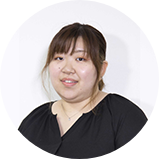Publishing achievements through the Fukushima Environment Database and Knowledge Base (FaCE!S)

Interviewee
Satomi lto
Research purpose and contents
More than 10 years have passed since the Fukushima Daiichi Nuclear Power Plant (FDNPS)
accident, and the reconstruction is progressing. However, there are concerns that with the passage of
time peoples' memory of the accident is fading with the reconstruction not having been completed in some
areas. It is the responsibility of the Japan Atomic Energy Agency (JAEA) to objectively communicate
research results and specialized knowledge in a format that is easy to understand; we must do this more
effectively than we have till date.
To achieve this, the results of the research on environmental dynamics and environmental monitoring
the JAEA has conducted are being published on the website "Fukushima Environment Database and Knowledge
Base" (also known as FaCE!S), which presents this information comprehensibly and in a format that is
accessible to the public.

FaCE!S(Fukushima Environment Database and Knowledge Base)
Database for Radioactive Substances Monitoring Data
Following the FDNPS accident, radioactive materials were released into diverse environments, including the atmosphere, forests, ocean, and rivers. Until now, various organizations, including the national government, local governments, and power companies, have been conducting radioactive substance monitoring alongside the JAEA. On the "Database for Radioactive Substance Monitoring Data," a database summarizing the results of this research is published. Previously, this database only contained diagrams prepared in advance or the data related to the research, and it was more suitable for specialists. However, this new version is based on maps, and it was improved to enable the display of several research subjects related to the exact location one would like to learn about. For instance, if you want to know the answer to the question "what is the radiation dose near my house?" You can zoom in and out of the maps, much like on normal online maps, and display the data chronologically or download it. We improved the convenience of the database by pursuing ease of viewing and testing the website from the perspective of general users.

Base Information Q&A Site
The "Base Information Q&A Site" is a site that makes the knowledge and analysis results obtained through previous research available in a Q&A format. The first level has a simple Q&A format with one answer for each question. The levels are organized in a way that they provide increasingly specialized information as one continues reading. The second level provides information to the public with diagrams and photographs. The third level provides more detailed information than the second level. The fourth level provides information suitable for specialists, including academic papers, reports, and links to relevant organizations, so as to provide information that is suitable to be used in research. Thus, its structure enables each user to determine how much information they want. It also enables the user to select only the necessary information. In addition, it uses many illustrations to make the information more accessible, and it groups each subject with a unique color for each theme to make it easier for the user to instinctively click on an article they want to read. We also made a smartphone version available to make the database more accessible.

It makes a large amount of information on reactor decommissioning technology and international content available; in this manner, it reflects the research/study that currently requires more research.
In the future, we would like to include information related to reactor decommissioning
technology, decommissioning, and international contents in English, as well as the
environmental dynamics research and environmental monitoring information to further enrich
the website.
Furthermore, with the help of symposiums, lectures, university festivals,
seminars for students, student internship, and online publications, we will expand the
manner in which FaCE!S presents the results of the research/study.Through these PR
activities, we would like to listen to diverse opinions and requests, in particular the
opinions and the research requirements of the local residents, and reflect those in our
research/study.